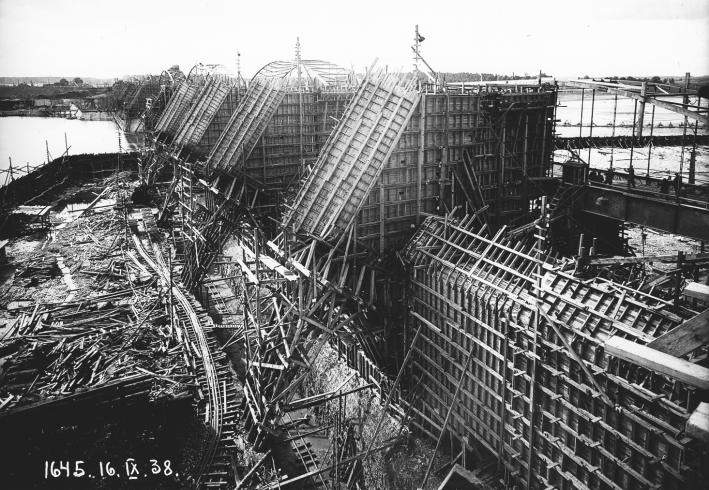Across 1930s Europe, governments used work-creation schemes to address the problem of rampant mass unemployment. Most often, these were used to carry out large-scale infrastructural projects. In East Central Europe, these projects also had an important state-building function. All states in this region were either newly created or fundamentally reshaped as a consequence of the First World War. The construction of new railway lines, production facilities or ports was thus deemed necessary to make these states’ new territories economically meaningful. A prime example is the Central Industrial District (Centralny Okręg Przemysłowy) in Poland, constructed from 1936 to integrate the partitions of Poland.
A less well-known example is the hydro-power plant in the Latvian town of Ķegums, based on a 16-meter high and 400-meter long dam constructed from dolomite rock, the gaps of which were injected with concrete. Works were started in 1936, and it went into operation on the eve of the Second World War. Newspaper coverage of the initial constructions conveys a sense of the transformative impact the construction site had on the town and its environs:
“Anyone who travels to the construction site of this large-scale power plant is witness to the preparatory works, which have started in August. The first impression after the train stops is that the little railway station of Ķegums has a buzz it has never had before, but which will most certainly grow much further. In the mind’s eye, we already see a significantly larger future railway station rise here. What the actual eye sees so far is the expansion of a wide street that will one day lead to the power plant.” [“Beim werdenden Grosskraftwerk Kegums.” Rigasche Rundschau, 17 October 1936].

